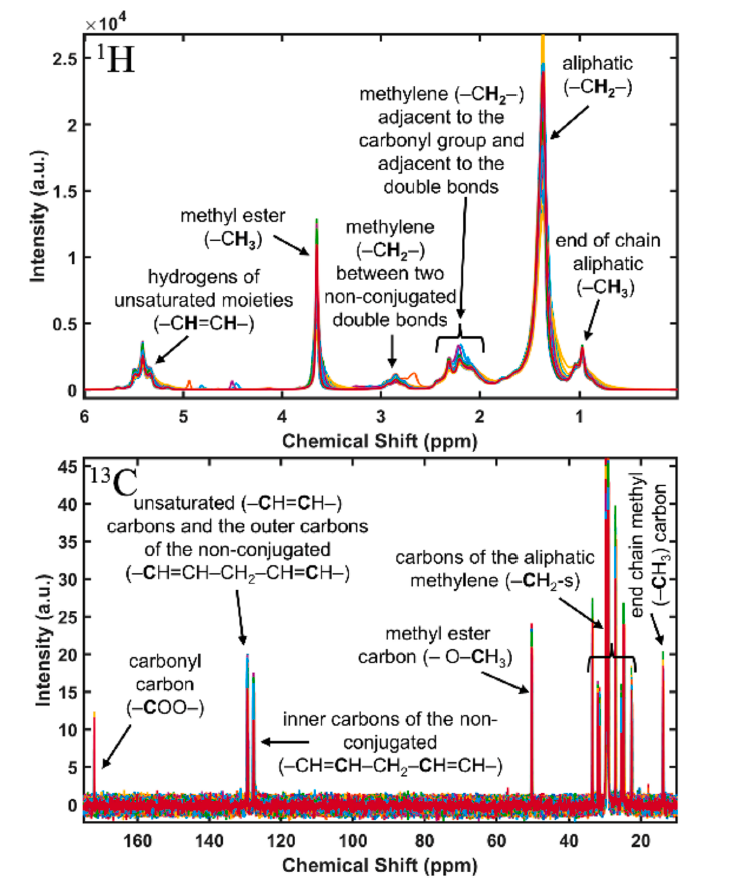633. Benchtop NMR spectroscopy and multivariate calibration for fast prediction of oxidation stability in commercial biodiesel
Tácito Lucena Conte, Jelmir Craveiro de Andrade, Ryan Luka da Silva Borges, Luciane Effting, Luciana Marçal Ravaglia, Glaucia Braz Alcantara, Carlos Adam Conte-Junior, Evandro Bona,Diego Galvan, MicrochemicalJ, (2025), DOI: 10.1016/j.microc.2025.113149
The emerging benchtop nuclear magnetic resonance (NMR) spectroscopy device has proven to be a powerful tool in process analytical control (PAC). In this study, 1H and 13C spectra obtained from benchtop NMR were modeled by partial least squares (PLS) regression for the rapid prediction of oxidative stability in commercial biodiesel with antioxidants, with the induction period (IP) determined by the accelerated oxidation method Rancimat® as the reference. According to regulatory standards, oxidative stability is related to the ability of biodiesel to resist oxidation, which, when degraded, generates a series of secondary products that can be detrimental to diesel engines. Combining 1H NMR spectra with PLS regression demonstrated better predictive performance among the evaluated strategies than the 13C nucleus. One reason for the inferior performance of the 13C NMR model is the lower natural abundance of the 13C nucleus compared to 1H, which affects the signal-to-noise ratio. Increasing the number of scans would improve the signal-to-noise ratio and potentially enhance the performance of the 13C model. However, this would also significantly increase the acquisition time. Therefore, the 1H NMR model was preferred, allowing spectrum acquisition in less than 5 min without sample preparation. Compared to the standard Rancimat® method, this novel analytical approach reduces the time required to estimate oxidative stability by 90 to 195 times, depending on whether the biodiesel complies with European or Brazilian regulatory standards. Furthermore, the 1H model obtained with the benchtop device was compared to high-field NMR for the same sample set and showed equivalent results.
